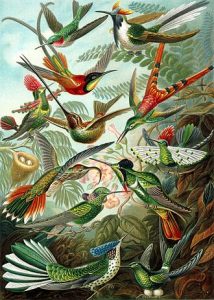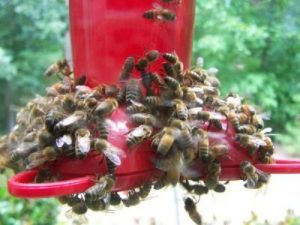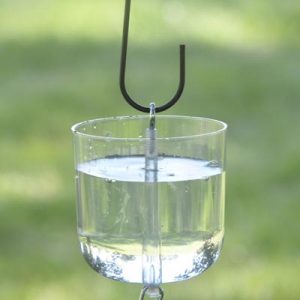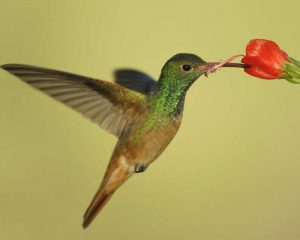
It’s time to think about our hummingbird friends. There are a dazzling array of hummingbirds, around 300 species.

Only a small number of these species live in North America and many will start out soon on their long migration south to Mexico, the Caribbean and Central America. Weighing far less than an ounce, some of these little birds take a land route through Texas. The ruby-throated hummingbird cuts across the Gulf of Mexico flying 500 miles non-stop for 20 hours. An Alaskan bird travels 4000 miles down the California coast.
So now is the time put out extra feeders and increase the strength of the sugar water provided from 4-to-1 to 3-to-1. The birds who live with me all summer now fatten themselves and increase their weight significantly to withstand the rigors of their fall migration. Also, as hummingbirds from the North fly through, they will need food during their trip.
The problem is that the hot dry conditions of late August have reduced the food and water supply for everybody. My feeders are plagued by ants and bees. I poured hundreds of ants into the sink when I washed out my feeder a couple of weeks ago. I watched one of my hummingbirds try to co pe with dozens of bees at a feeder and simply give up since the hungry and thirsty bees were relentless. Other insects also compete for the sugar water: moths, hornets, spiders, praying mantises, and earwigs.
pe with dozens of bees at a feeder and simply give up since the hungry and thirsty bees were relentless. Other insects also compete for the sugar water: moths, hornets, spiders, praying mantises, and earwigs.
Fortunately, there are hummingbird feeders that position the nectar deeply enough to allow the hummingbird’s long beak to feed, but not other insects. These feeders help but do not solve the problem. I have learned recently that moving the feeders often and moving them into shade cuts down on bees. I am a little surprised that my clever bees are slower to find the relocated feeders than the hummingbirds.
I am also advised that bees and wasps like the color yellow. It is amazing how many hummingbird feeders have a touch of yellow decoration; I have one in the vegetable garden that I will replace or perhaps just take down in August when insects are out in force.
I have been trapping ants using a very sticky application called Tanglefoot. I wrap t he bottom of the iron stake where my feeder hangs with cling wrap and paint on the Tanglefoot that forms a barrier to ant invasions. Of course the wretched ants number in the millions so the Tanglefoot has to be reapplied once a week. There are also ant traps that hang above the feeder. Filled with plain water, these act as a moat that forces ants to face drowning to get to the sugar water.
he bottom of the iron stake where my feeder hangs with cling wrap and paint on the Tanglefoot that forms a barrier to ant invasions. Of course the wretched ants number in the millions so the Tanglefoot has to be reapplied once a week. There are also ant traps that hang above the feeder. Filled with plain water, these act as a moat that forces ants to face drowning to get to the sugar water.
I happily have not had any attacks by yellow jackets, hornets or wasps. Apparently one might just leave them to a feeder they have invaded, and put up another feeder for the birds. Or– and I cannot imagine doing this– one can put a bit of hamburger soaked in apple juice on a plate to attract these carnivorous insects.
I suppose all this illustrates how much trouble hummingbird lovers will go to in order to help out these tiny birds. They are one of my summer’s greatest pleasures. And I enjoy helping them fatten up for their long trip south. I would be miserable if asked to ride in a comfortable car for 20 hours non-stop. So I will do what I can for these brave travelers.
